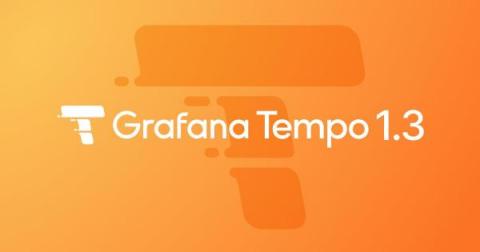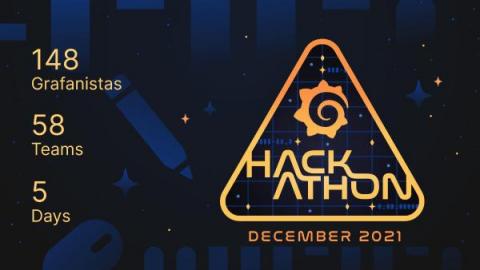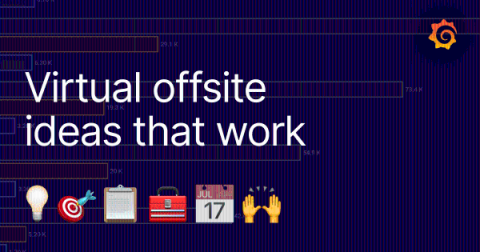Operations | Monitoring | ITSM | DevOps | Cloud
Grafana
Grafana Tempo 1.3 released: backend datastore search, auto-forget compactors, and more!
Grafana Tempo 1.3 has been released! We are proud to add the capability to search the backend datastore. This feature will also appear soon in Grafana Cloud Traces. If you want to dig through the nitty-gritty details, you can always check out the v1.3 changelog. If that’s too much, this post will cover the big ticket items. You can also register for our upcoming webinar “Distributed tracing in Grafana: From Tempo OSS to Enterprise” on Jan.
A (de)bug's life: Diagnosing and fixing performance issues in Grafana Loki's read path
Beep, beep, beeeeeeeep. Read path SLO page, again. And I’ve almost found the noisy neighbor! That was me. And will probably be me again at some point in the future. As we continue to scale up the team that builds and runs Grafana Loki at Grafana Labs, I’ve decided to record how I find and diagnose problems in Loki.
A beginner's guide to network monitoring with Grafana and Prometheus
Networks are the backbone of inter-communications within computer systems and applications. When networks go down or experience any interruption of service, the impact is widely felt and can result in significant service disruptions and lost revenue. This is why network monitoring is mission critical for organizations. Visibility into network performance is key to ensuring that network engineering teams can be more proactive and identify problems before those issues cause outages.
All about the Grafana Labs Hackathon 2.0
After the success of our first company-wide hackathon last June, we committed to hosting more hackathons each year. So in December, Grafana Labs invited the company to once again press pause on the daily grind and commit five days to our second hackathon. And the Grafanistas showed up: 148 staffers (almost 20% more than the last round) signed on for the week-long event that involved virtual brainstorming, collaborative coding, and creative presentations.
Virtual offsite ideas that work: How the Grafana Cloud team brings together 150 people online
It was a Wednesday in November, and we had just wrapped Grafana Labs' third virtual Grafana Cloud offsite of 2021. Outside my window, it was a dark and cold (8 degrees Celsius) night in Cologne (Köln), Germany. In Austin, Texas, it was early afternoon and headed for 80 degrees Fahrenheit. In Cape Town, South Africa, it was a windy and cool spring evening. And in Melbourne, Australia, our final speaker — who was up very early at 5 a.m. — was heading into a cool spring day.
Configuring Grafana Tempo and Linkerd for distributed tracing
Anders Østhus is a DevOps Engineer on the Digital Tools team at Proactima AS, a consulting firm based in Norway that offers services and expertise in risk management, cybersecurity, healthcare, environmental solutions, and more. It can be difficult to orient yourself in the distributed tracing space, and getting all the parts of a tracing setup to play well with each other can be a bit tricky. But the benefits of tracing are undeniable.
Top 5 user-requested synthetic monitoring alerts in Grafana Cloud
We often hear from Grafana Cloud users who are asking for guidelines on how to write better alerts on synthetic monitoring metrics and get notified when synthetic monitoring detects a problem. We already ship a predefined alert in Grafana Cloud synthetic monitoring. A predefined alert that we ship is alerting on the probe_all_success_sum metric and makes use of the alert sensitivity config to create multiple Grafana Cloud alerting rules. Check out synthetic monitoring alerting docs for details.
Reducing MTTR and tracking SLAs with Grafana Cloud
Attracting and retaining top developer talent is a No. 1 priority for a lot of companies these days, including location technology company TomTom. As both the builder of the world’s largest developer community and an employer of thousands of developers, TomTom is always looking for developer-friendly tools to help their employees feel productive, efficient, and inspired.
Building an effective remote-first team during the pandemic
I’m an engineering manager at Grafana Labs serving on the Grafana Enterprise Operations team. I joined Grafana Labs in December 2020 and I just celebrated my first year at the company. The last 12+ months have been filled with the most exciting and rewarding experiences in my career, full of new opportunities and learnings. More importantly, I am lucky enough to meet and work with the wonderful people at Grafana Labs.











